Pub And Bar Wall Art & Canvas Prints
Pub And Bar Wall Art & Canvas Prints
Couldn't load pickup availability
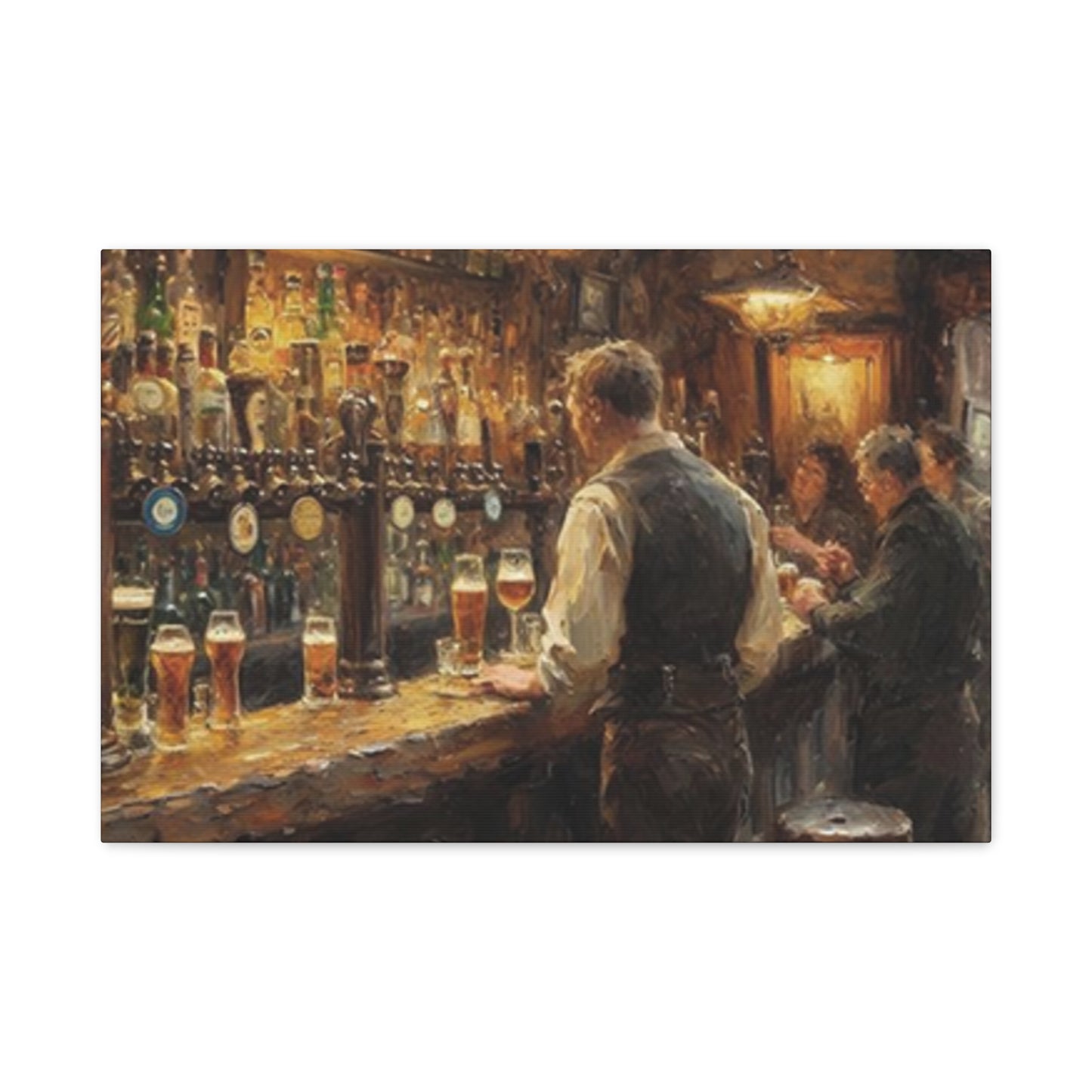
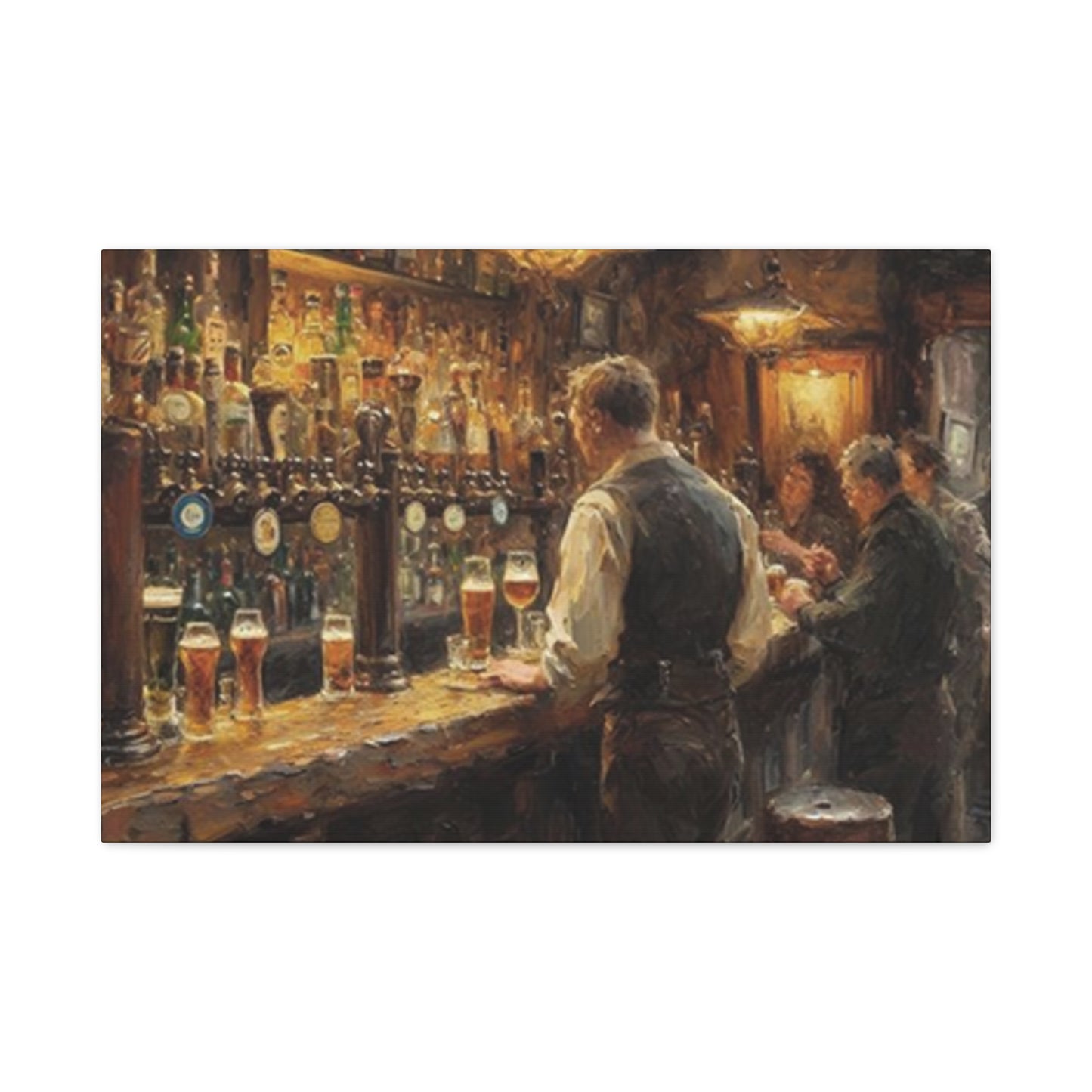
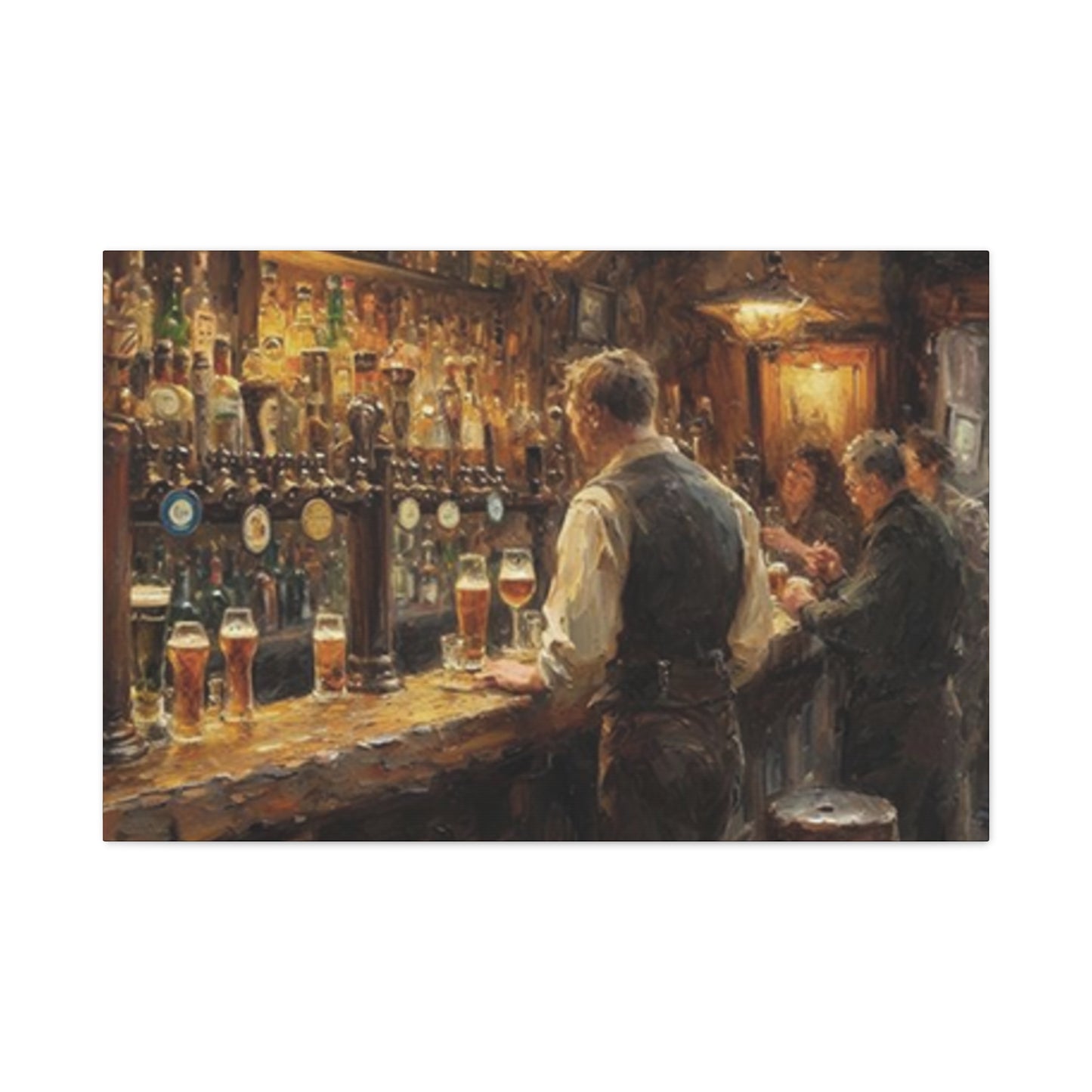


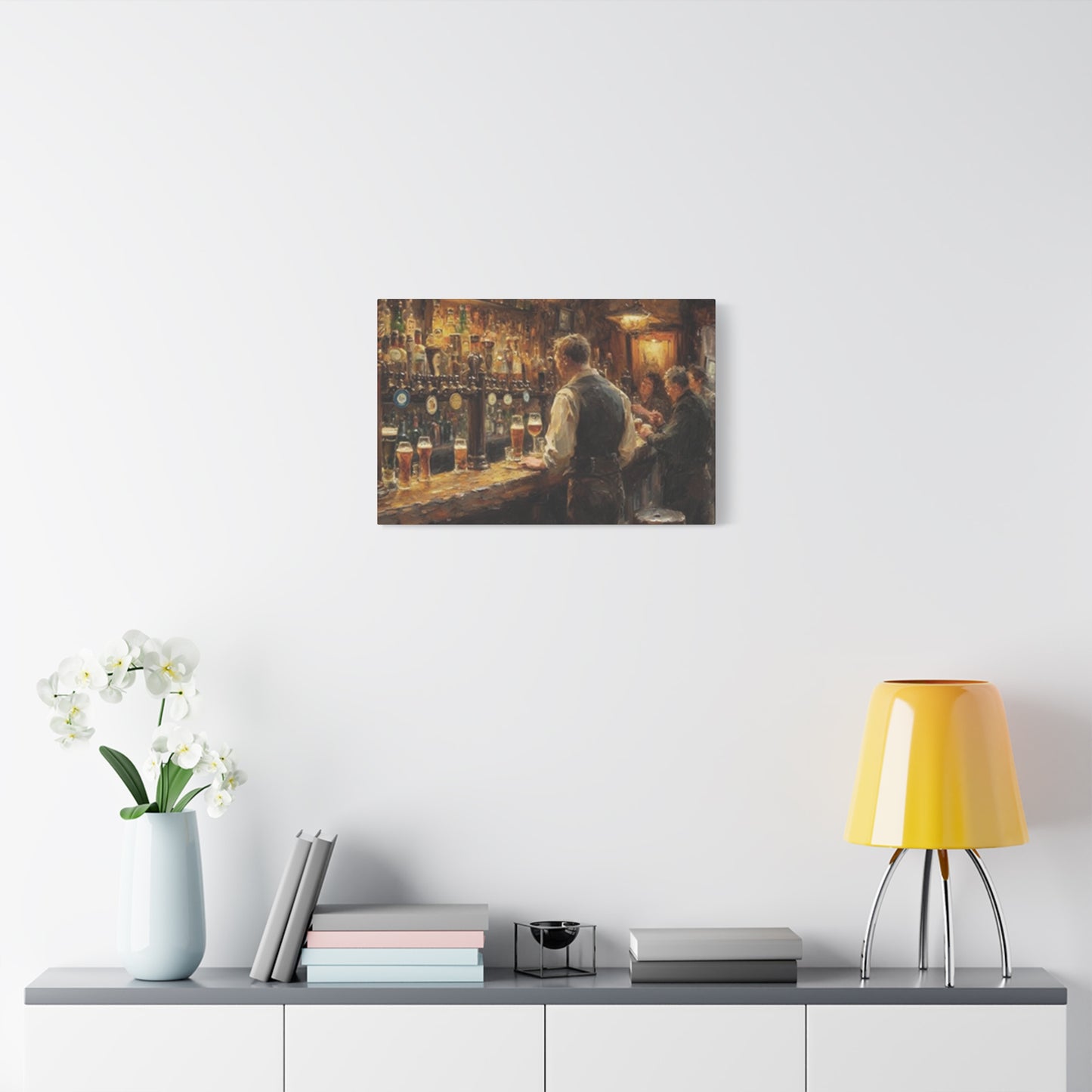
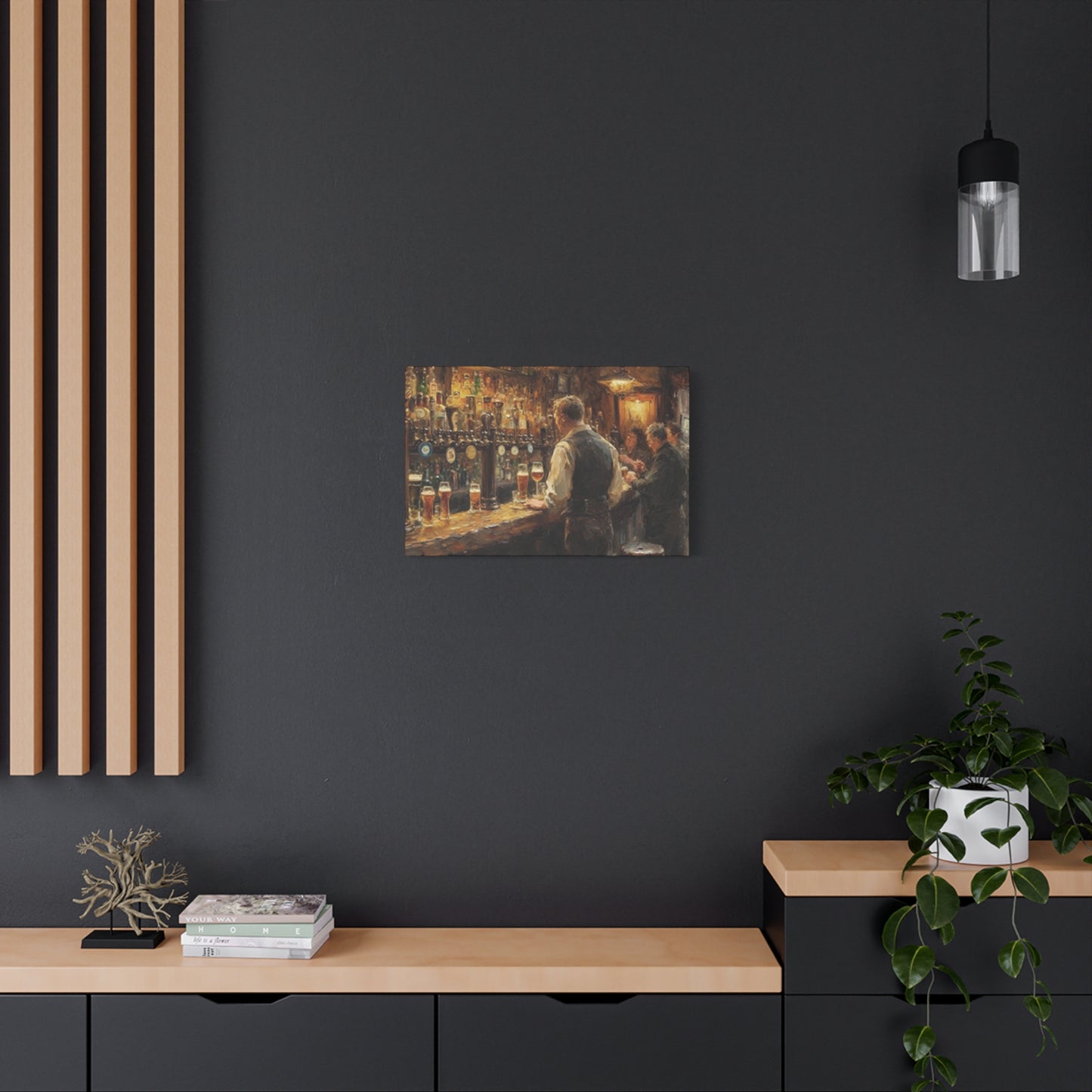
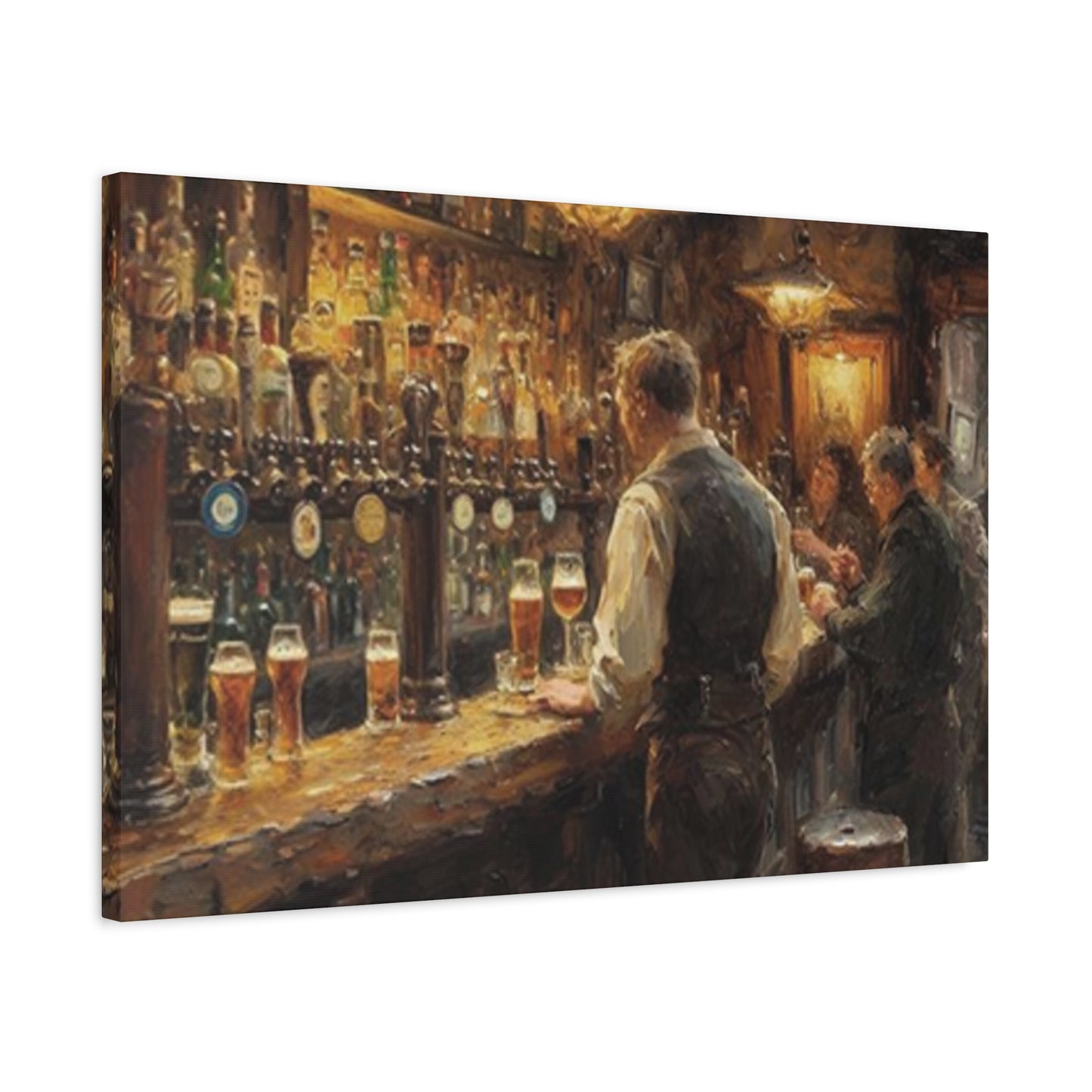

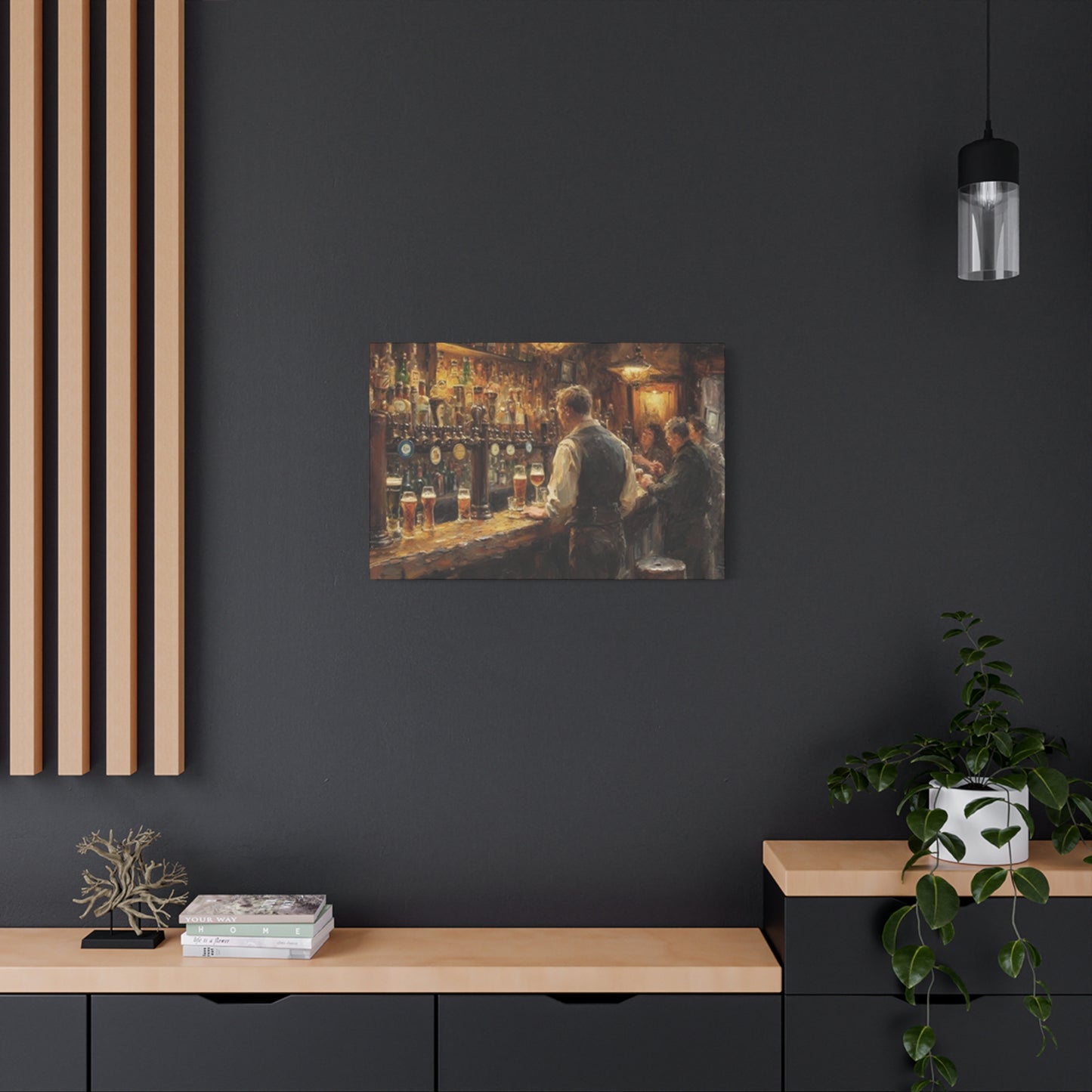
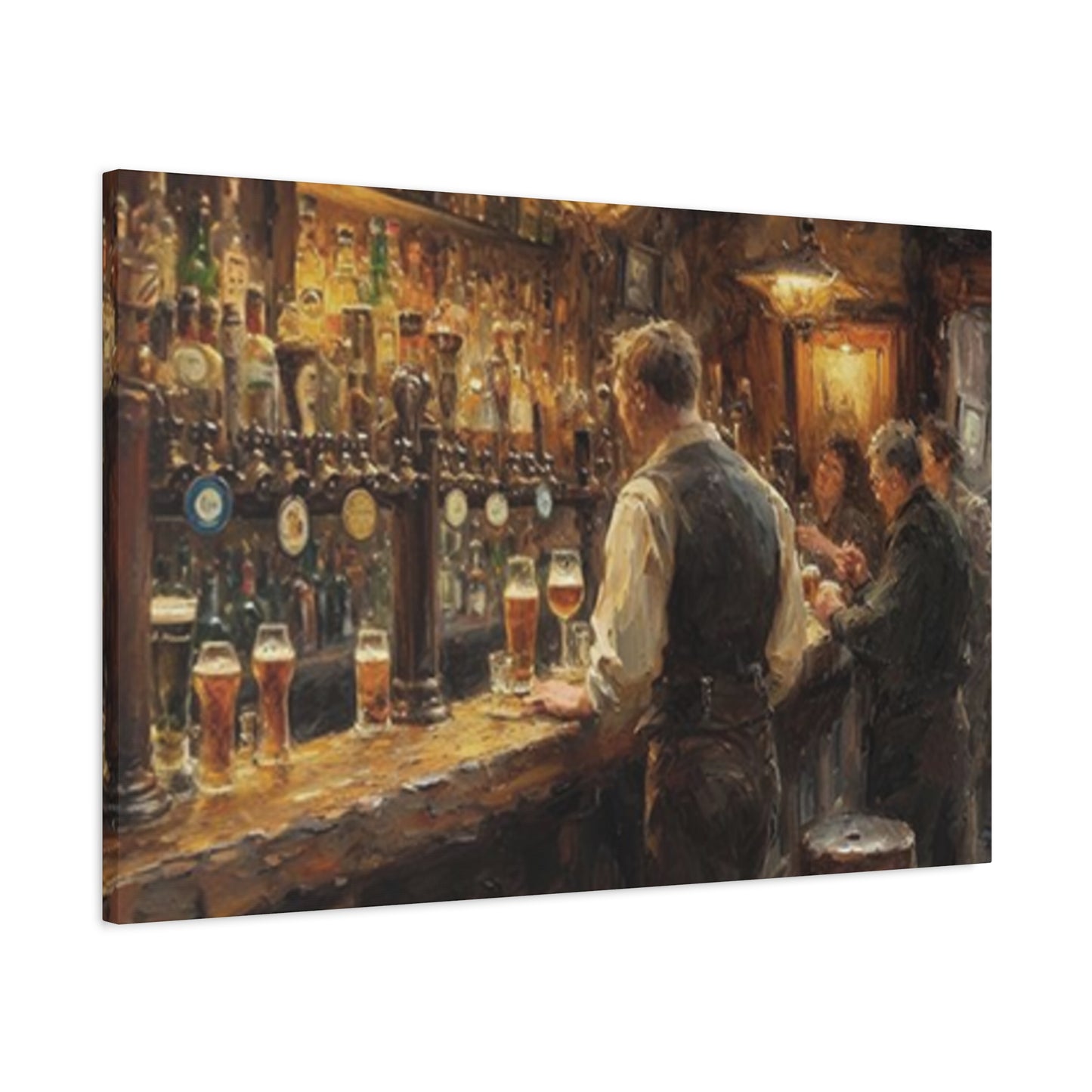
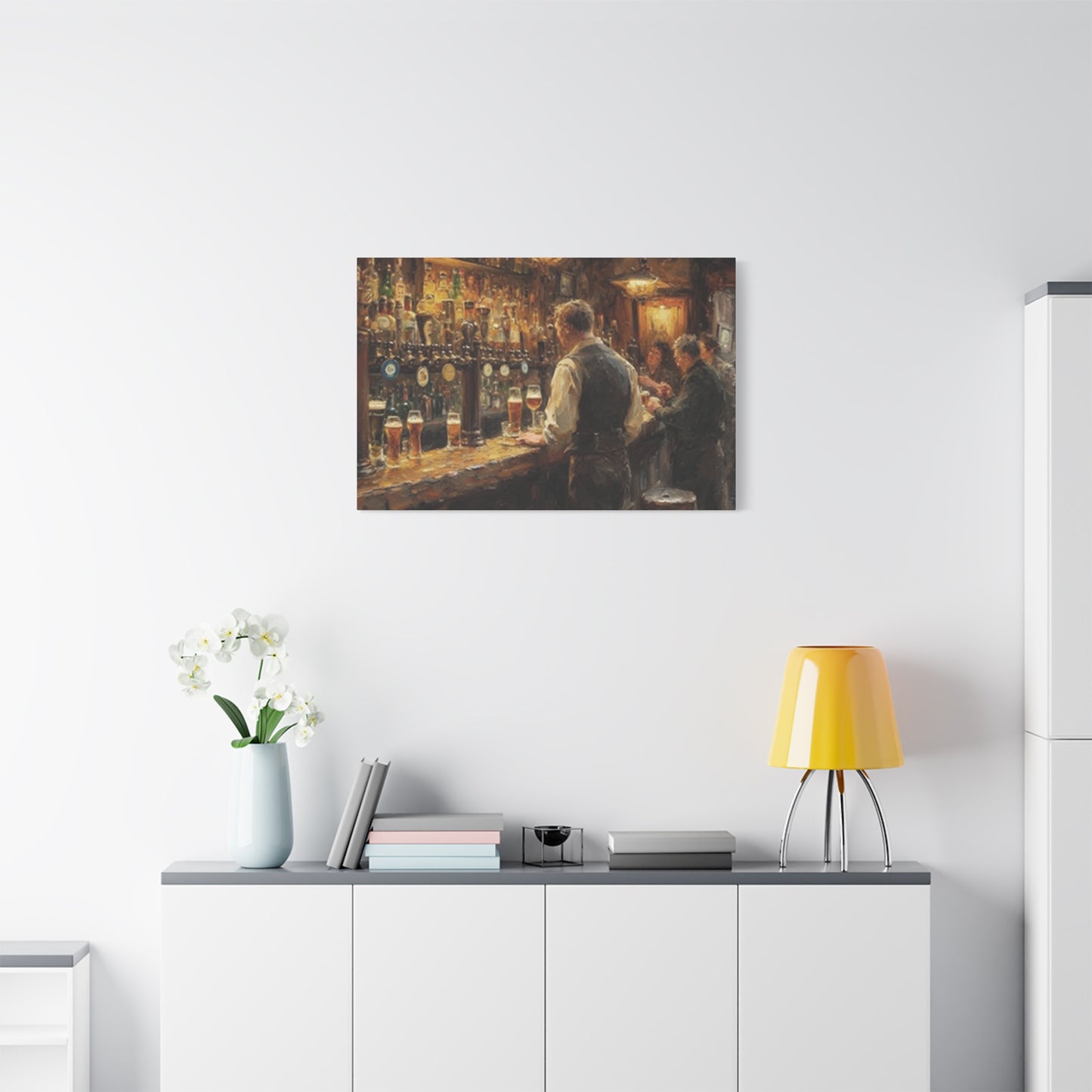

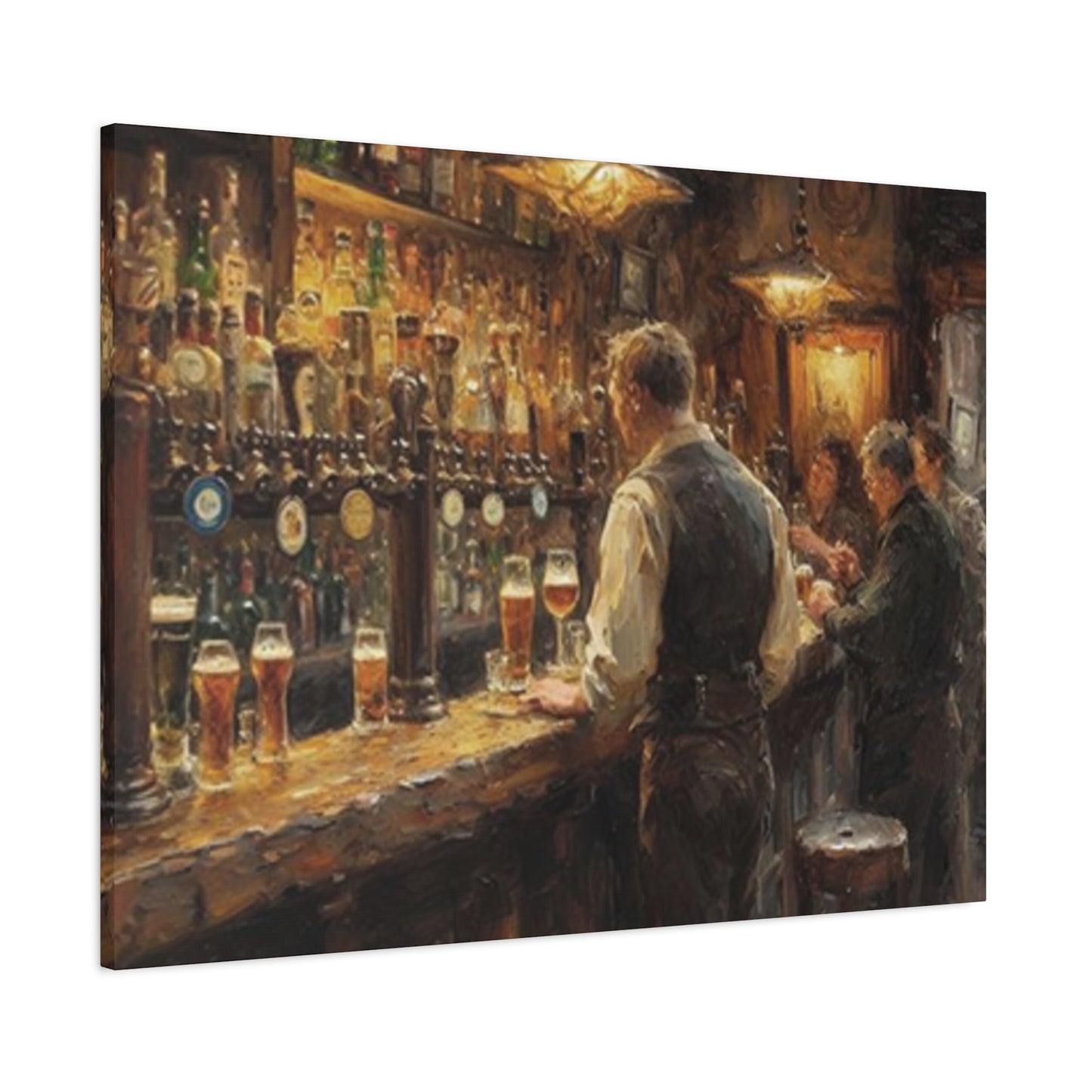


From Beer to Beauty: Bar Wall Art That Defines Your Pub
Creating an inviting and memorable pub atmosphere requires careful attention to visual elements that shape customer experience. The strategic selection and placement of artistic elements on walls can transform an ordinary drinking establishment into a destination that patrons eagerly revisit. This comprehensive exploration examines twenty distinct approaches to enhancing pub environments through thoughtful artistic choices that resonate with customers, support local communities, and establish lasting brand identity.
The modern pub landscape demands establishments that offer more than just beverages and basic amenities. Today's customers seek immersive experiences that engage multiple senses and create lasting memories. Visual elements play a crucial role in this experience, serving as conversation starters, photo opportunities, and atmospheric enhancers that distinguish one establishment from countless others in increasingly competitive markets.
Successful pub owners recognize that artistic choices extend far beyond simple decoration. These elements become integral components of brand identity, customer engagement strategies, and community connection points. Whether embracing traditional aesthetics or pushing creative boundaries, the right artistic approach can significantly impact customer satisfaction, social media presence, and overall business success.
This detailed examination provides practical insights, creative inspiration, and actionable strategies for pub owners, managers, and anyone involved in creating compelling drinking environments. Each approach outlined here has been developed through extensive research into successful establishments worldwide, customer behavior studies, and emerging trends in hospitality design.
Discovering Exceptional Pub Wall Art Styles That Define Atmosphere
The foundation of any memorable pub environment begins with understanding how different artistic styles can transform customer perception and experience. Traditional pub aesthetics often incorporate elements that evoke warmth, comfort, and community connection. These might include vintage brewery advertisements, antique maps of local regions, or collections of historical photographs that tell stories about the establishment's heritage or surrounding neighborhood.
Contemporary pub owners increasingly experiment with eclectic combinations that blend traditional elements with modern artistic expressions. This hybrid approach allows establishments to honor their heritage while appealing to diverse customer demographics. For example, a pub might feature classic wooden frames showcasing local historical photographs alongside contemporary abstract paintings created by regional artists.
Industrial-style artistic elements have gained popularity in urban pubs, particularly those housed in converted warehouses or factories. These establishments often incorporate raw materials like exposed brick, metal fixtures, and artistic elements that complement the architectural environment. Large-scale photography printed on canvas or metal, abstract sculptures, and vintage industrial equipment repurposed as artistic installations can create striking visual focal points.
Minimalist approaches work exceptionally well in establishments targeting professional clientele or those seeking sophisticated atmospheres. Clean lines, carefully curated collections, and strategic use of negative space can create environments that feel upscale and refined. This style often incorporates high-quality prints, professional photography, or limited collections of carefully selected pieces rather than overwhelming displays.
Themed artistic approaches allow pubs to create immersive experiences that transport customers to different times, places, or cultural contexts. Sports-themed establishments might feature memorabilia collections, action photography, and team colors throughout their artistic displays. Music-themed venues could incorporate vintage concert posters, instrument displays, or photographs of legendary performers.
The selection process for artistic styles should consider several factors including target demographic, establishment size, lighting conditions, and existing architectural elements. Successful implementation requires balancing visual impact with practical considerations like maintenance requirements, durability, and potential for updates or seasonal changes.
Customer feedback and observation provide valuable insights into which artistic elements resonate most effectively. Many successful pub owners regularly assess customer behavior, noting which areas naturally attract attention and encourage social interaction. This information guides future artistic decisions and helps optimize the overall customer experience.
Theme Matching Art Techniques for Cohesive Pub Environments
Creating cohesive thematic experiences requires careful coordination between artistic elements and overall establishment concepts. This process begins with clearly defining the intended atmosphere, target audience, and unique selling propositions that differentiate the establishment from competitors. Once these foundations are established, every artistic choice should reinforce and enhance the chosen theme.
Historical themes offer rich opportunities for artistic expression and customer engagement. Pubs focusing on specific historical periods can incorporate authentic artifacts, reproduction pieces, and contemporary artistic interpretations of historical elements. For example, a prohibition-era themed establishment might feature vintage cocktail advertisements, photographs from the 1920s, and artistic elements that evoke speakeasy atmospheres.
Geographic themes allow establishments to celebrate specific regions, cities, or cultural traditions. Irish pubs often incorporate traditional Celtic artwork, landscape photography of Ireland, and cultural artifacts that create authentic atmospheres. Similarly, establishments celebrating local heritage might feature artwork depicting regional landmarks, historical events, or cultural traditions that resonate with community members.
Seasonal theme adaptations keep establishments feeling fresh and encourage repeat visits throughout the year. This approach requires planning artistic displays that can be easily updated or modified to reflect different seasons, holidays, or special events. Modular display systems, interchangeable elements, and flexible mounting options facilitate these regular updates.
Industry or profession-themed establishments can create strong connections with specific customer segments. Firefighter-themed pubs might incorporate vintage equipment, heroic photography, and artistic tributes to emergency services. Similarly, establishments near universities might celebrate academic achievements, school history, or student culture through their artistic choices.
Color coordination plays a crucial role in successful theme implementation. Artistic elements should complement and enhance established color schemes rather than competing for attention or creating visual confusion. This requires understanding color psychology, lighting interactions, and how different hues affect customer mood and behavior.
Storytelling through artistic arrangements helps customers understand and connect with chosen themes. Rather than randomly placing themed elements, successful establishments create visual narratives that unfold as customers explore different areas. This might involve chronological arrangements, geographic progressions, or thematic clusters that encourage discovery and exploration.
Authentication adds credibility and depth to themed environments. Customers can often distinguish between genuine thematic commitment and superficial decorative choices. Investing in authentic pieces, conducting thorough research, and consulting with experts in relevant fields helps create convincing and respectful thematic presentations.
Supporting Local Artists Through Pub Wall Art Initiatives
Establishing partnerships with local artists creates mutually beneficial relationships that enhance pub environments while supporting creative communities. These collaborations provide artists with exhibition opportunities and potential sales platforms while giving establishments access to unique, locally-relevant artistic content that cannot be found elsewhere.
Artist showcases can be organized on rotating schedules, allowing multiple creators to display their work throughout the year. This approach keeps visual environments fresh and exciting while providing artists with valuable exposure opportunities. Monthly or quarterly rotations work well for most establishments, allowing sufficient time for customer appreciation while maintaining reasonable turnover schedules.
Commission-based projects enable pubs to acquire custom artwork specifically designed for their environments and themes. Local artists can create pieces that incorporate establishment logos, historical references, or architectural elements that perfectly complement existing design schemes. These unique pieces become valuable assets that strengthen brand identity and create distinctive visual signatures.
Collaborative creation events bring artists and customers together in engaging social experiences. Paint nights, sketch sessions, or crafting workshops hosted within pub environments combine entertainment with artistic creation while building stronger community connections. Customers enjoy creative activities while artists gain exposure and teaching opportunities.
Sales facilitation helps artists monetize their displayed work while providing customers with unique purchasing opportunities. Simple price display systems, contact information cards, and purchase facilitation processes allow interested customers to acquire pieces they admire. Establishments can earn modest commissions while primarily focusing on supporting artist success.
Student artist programs connect with local schools, colleges, and universities to provide emerging artists with professional display opportunities. These programs often prove highly successful because they combine community support with fresh, innovative artistic perspectives that appeal to diverse customer demographics.
Community art challenges or competitions generate excitement while encouraging artistic participation from broader community segments. Themed contests related to establishment history, local landmarks, or seasonal celebrations can produce impressive collections of locally-created artwork while generating positive publicity and community engagement.
Artistic collaboration extends beyond traditional visual arts to include musicians, poets, and performance artists who can contribute to overall establishment atmospheres. Open mic nights, poetry readings, and small-scale performance events create dynamic environments that change regularly and attract diverse customer groups.
Incorporating Graffiti and Street Art Elements Successfully
Street art aesthetics can transform pub environments when implemented thoughtfully and professionally. This artistic approach particularly appeals to younger demographics while creating edgy, contemporary atmospheres that stand out in competitive markets. However, successful implementation requires understanding the difference between authentic street art expression and superficial imitation.
Legal graffiti installations involve commissioning professional street artists to create original works specifically designed for pub environments. These pieces capture the energy and visual impact of street art while ensuring legal compliance and professional quality. Many talented street artists welcome opportunities to work in legitimate commercial settings where their work will be appreciated and preserved.
Mural projects can cover entire walls or designated sections with elaborate artistic expressions that become signature features of establishments. These large-scale installations create dramatic visual impact and provide excellent opportunities for social media content creation. Customers often photograph themselves against striking mural backgrounds, generating organic marketing content.
Permission-based outdoor installations on building exteriors can create distinctive street presence that attracts attention from pedestrians and passing traffic. However, these projects require careful coordination with local authorities, property owners, and community stakeholders to ensure compliance with regulations and community acceptance.
Urban photography collections celebrating street art from various locations can bring authentic street culture into pub environments without requiring original creation. High-quality prints of notable street art pieces, accompanied by information about artists and locations, create educational and visually stimulating displays.
Typography-focused installations incorporate stylized lettering, quotes, and messages that reflect street art aesthetics while delivering specific content relevant to establishment themes or community values. Custom lettering designs for establishment names, popular drink offerings, or motivational messages can create unique visual elements.
Interactive elements allow customers to contribute to ongoing street art installations through designated areas where they can add signatures, messages, or small artistic contributions. These participatory elements must be carefully managed to maintain aesthetic quality while encouraging customer engagement.
Contemporary interpretations of street art techniques can be applied to traditional pub elements like chalkboards, menu displays, or directional signage. This approach maintains professional standards while incorporating edgy visual elements that appeal to street art enthusiasts.
Rustic Wall Ideas for Authentic Pub Atmospheres
Rustic artistic elements create warm, inviting atmospheres that evoke traditional pub experiences and comfort-focused customer expectations. This approach emphasizes natural materials, vintage aesthetics, and handcrafted elements that suggest authenticity and timeless appeal rather than trendy contemporary design choices.
Reclaimed wood installations provide excellent foundations for rustic artistic displays. Weathered barn wood, old fence posts, or salvaged building materials can be transformed into unique mounting surfaces for photographs, signs, or decorative elements. These materials bring natural texture and character that cannot be replicated through manufactured alternatives.
Vintage advertising collections featuring old brewery signs, tobacco advertisements, or general store promotions create nostalgic atmospheres that resonate with customers seeking authentic traditional pub experiences. Authentic vintage pieces command premium prices, but high-quality reproductions can achieve similar visual effects at more accessible costs.
Natural element incorporation brings outdoor aesthetics inside through artistic arrangements of branches, stones, dried flowers, or other organic materials. These elements must be properly treated and maintained to ensure longevity and cleanliness while contributing to desired rustic atmospheres.
Antique tool displays showcase vintage implements that reflect regional industries, traditional crafts, or historical occupations relevant to local community heritage. Old farming tools, woodworking implements, or trade-specific equipment can create interesting visual displays while honoring local history and traditions.
Mason jar installations offer versatile options for lighting, plant displays, or decorative arrangements that reinforce rustic themes. These familiar elements can be incorporated into larger artistic installations or used as individual accent pieces throughout establishment environments.
Handcrafted signage using traditional techniques like wood burning, hand painting, or carved lettering creates unique elements that cannot be mass-produced. Local craftspeople often welcome opportunities to create custom pieces that reflect establishment identity while showcasing traditional skills and techniques.
Textile incorporations through vintage quilts, woven rugs, or handcrafted fabric art add warmth and texture to rustic environments. These elements must be properly protected from kitchen vapors and general pub environment challenges while contributing to desired aesthetic goals.
DIY Bar Art Projects for Budget-Conscious Enhancement
Do-it-yourself artistic projects enable pub owners to create unique visual elements while managing costs and expressing personal creativity. These projects require time investment but can produce distinctive results that perfectly match establishment needs and aesthetic preferences while building personal satisfaction through hands-on creation.
Photo collection development involves curating and printing personal photographs or commissioning local photographers to capture relevant images. Historic photographs of the building, neighborhood scenes, or community events can be professionally printed and framed to create meaningful displays that connect establishments with their surrounding communities.
Custom sign creation using basic woodworking skills, paint, and creative design can produce unique directional signs, menu boards, or decorative elements. Simple techniques like stenciling, hand lettering, or distressing can achieve professional-looking results with modest tool investments and patience for learning new skills.
Bottle and glass repurposing transforms discarded containers into artistic installations, lighting fixtures, or decorative displays. Wine bottles can become candle holders, beer bottles can be converted into planters, and interesting glassware can be arranged into striking visual displays that reflect establishment identity.
Fabric and textile projects using canvas, burlap, or other materials can create custom wall hangings, banners, or soft artistic elements. Basic sewing skills enable creation of unique pieces that perfectly match color schemes and size requirements while expressing personal artistic vision and establishment character.
Chalk art development on designated chalkboard surfaces allows for regular updates and seasonal changes while showcasing artistic abilities. Daily specials, inspirational quotes, or decorative border designs can transform functional chalkboards into dynamic artistic elements that change regularly and encourage customer attention.
Mixed media installations combine various materials like wood, metal, glass, and fabric into unique artistic compositions. These projects require creativity and experimentation but can produce one-of-a-kind pieces that become signature features distinguishing establishments from competitors.
Collaborative creation with friends, family, or staff members can make DIY projects more enjoyable while building team connections and shared investment in establishment success. Group creation sessions can become memorable experiences while producing artistic elements that reflect collective creativity and commitment.
Hanging Big Art for Maximum Visual Impact
Large-scale artistic installations create dramatic focal points that immediately capture customer attention and establish strong atmospheric foundations for memorable pub experiences. These significant pieces require careful planning, professional installation, and ongoing maintenance but provide unmatched visual impact that justifies the investment and effort required.
Scale planning involves assessing wall dimensions, ceiling heights, and viewing distances to determine appropriate artwork sizes that create desired impact without overwhelming available space. Large pieces should complement rather than compete with architectural features while maintaining proper proportions relative to surrounding elements and furniture arrangements.
Professional installation services ensure secure mounting that protects valuable artwork while maintaining safety standards for customer and staff environments. Heavy pieces require specialized hardware, structural assessments, and expertise in weight distribution to prevent accidents and protect investments in both artwork and building infrastructure.
Lighting design specifically focused on large installations maximizes visual impact while protecting artwork from damaging exposure. Professional lighting systems can create dramatic effects, highlight specific details, or adjust throughout daily cycles to maintain optimal presentation under varying ambient conditions.
Grouping strategies for multiple large pieces require understanding visual balance, flow patterns, and focal point management. Sequential arrangements, thematic clustering, or contrasting presentations can create sophisticated displays that guide customer attention and create natural conversation areas throughout establishment environments.
Maintenance protocols for large installations address cleaning requirements, environmental protection, and damage prevention strategies. Regular inspections, professional cleaning services, and protective measures against kitchen vapors or customer contact help preserve investments while maintaining optimal presentation quality.
Seasonal rotation systems allow establishments to vary their large-scale displays throughout the year, maintaining customer interest while accommodating different themes, promotions, or community events. Storage solutions and handling procedures must be developed to protect pieces during transitions and ensure safe installation changes.
Investment recovery through strategic placement and marketing can help justify expenses associated with large artistic installations. These pieces often become signature features that customers associate with establishment identity, generating social media content and word-of-mouth marketing that contributes to business success.
Effective Chalkboard Tips for Dynamic Messaging
Chalkboard installations provide flexible platforms for regular content updates while maintaining authentic pub atmospheres that customers associate with traditional hospitality environments. These versatile surfaces enable daily menu changes, promotional announcements, and artistic expressions that keep establishments feeling fresh and responsive to customer interests.
Surface preparation ensures optimal writing quality and longevity for chalkboard installations. Proper priming, seasoning, and initial setup create foundations that accept chalk cleanly while enabling easy erasing and consistent appearance over extended use periods. Quality preparation prevents common problems like ghosting, uneven coverage, and premature surface deterioration.
Content planning for chalkboard displays should balance informational requirements with artistic presentation opportunities. Daily specials, drink lists, and promotional messages can be enhanced through decorative borders, stylized lettering, and small illustrative elements that maintain functionality while adding visual appeal and personality.
Lettering techniques using various chalk types, markers, and artistic tools can create professional-looking displays that rival printed materials in visual impact and readability. Consistent font styles, proper spacing, and strategic use of emphasis techniques help customers quickly locate important information while appreciating artistic presentation.
Maintenance schedules ensure chalkboard displays consistently present clean, professional appearances that reflect establishment standards and attention to detail. Regular cleaning, surface conditioning, and content updates prevent deterioration and maintain customer confidence in establishment professionalism and food safety standards.
Color integration through colored chalks or chalk markers adds visual interest and organizational capabilities to chalkboard displays. Different colors can distinguish categories, highlight special items, or create seasonal themes while maintaining readability and professional appearance standards.
Interactive opportunities allow customers to contribute to chalkboard displays through designated areas for feedback, recommendations, or artistic contributions. These participatory elements must be carefully managed to maintain overall display quality while encouraging customer engagement and community connection.
Weather protection for outdoor chalkboard installations requires specialized surfaces, protective coverings, or strategic placement that prevents rain damage while maintaining visibility and accessibility. Indoor installations must consider kitchen vapors, humidity levels, and cleaning chemical exposure that can affect surface quality and content preservation.
Creating Feature Wall Guide for Stunning Focal Points
Feature walls serve as primary visual anchors that establish atmospheric foundations and guide customer attention throughout pub environments. These specialized installations require comprehensive planning that considers architectural constraints, theme development, customer flow patterns, and maintenance requirements while creating memorable experiences that distinguish establishments from competitors.
Location selection for feature walls involves analyzing customer sight lines, natural lighting conditions, and traffic patterns that maximize visibility and impact while avoiding conflicts with functional requirements like service areas or emergency exits. Strategic placement near entrance areas creates immediate impression opportunities while secondary locations can provide intimate focal points for specific seating areas.
Theme development for feature walls should reinforce overall establishment identity while creating distinctive visual statements that customers remember and associate with positive experiences. Whether celebrating local history, showcasing artistic collections, or creating immersive branded environments, feature walls must align with broader marketing strategies and customer expectations.
Design integration ensures feature walls complement rather than compete with surrounding architectural elements, furniture arrangements, and functional requirements. Color coordination, scale relationships, and visual flow considerations help create cohesive environments that feel intentional and professionally designed rather than randomly assembled.
Material selection affects both visual impact and long-term maintenance requirements for feature wall installations. Durability, cleaning requirements, and resistance to environmental factors like humidity, temperature variations, and kitchen vapors influence both initial costs and ongoing operational expenses throughout feature wall lifecycles.
Installation logistics require coordinating multiple trades, managing customer disruption, and ensuring proper project sequencing that minimizes business interruption while maintaining quality standards. Professional project management helps avoid common pitfalls while ensuring installations meet expectations and timeline requirements.
Content curation for artistic feature walls involves selecting pieces that work together harmoniously while maintaining individual impact and interest. Whether featuring single large installations or collections of smaller elements, successful feature walls create visual narratives that encourage customer exploration and engagement.
Future flexibility considerations enable feature wall adaptations for seasonal changes, promotional campaigns, or evolving business needs without requiring complete reinstallation. Modular systems, adjustable mounting hardware, and adaptable lighting solutions provide options for future modifications while protecting initial investments.
Upcycled Decor Solutions for Sustainable Pub Environments
Sustainable artistic approaches using repurposed and upcycled materials create distinctive pub environments while demonstrating environmental responsibility that resonates with increasingly conscious customer demographics. These creative solutions often produce unique results that cannot be purchased from commercial suppliers while managing costs and supporting community sustainability initiatives.
Material sourcing for upcycled projects requires developing relationships with local businesses, demolition companies, and community members who can provide interesting materials that might otherwise be discarded. Construction sites, renovation projects, and industrial facilities often generate materials suitable for creative repurposing with proper planning and coordination.
Safety assessments ensure repurposed materials meet health and safety standards appropriate for commercial food service environments. Lead paint testing, structural integrity evaluations, and cleanliness assessments protect customers and staff while ensuring compliance with health department regulations and insurance requirements.
Design creativity transforms ordinary discarded materials into artistic installations that reflect establishment personality while serving functional purposes. Old doors become table surfaces, vintage windows frame artistic displays, and industrial equipment becomes decorative features that tell stories about regional history and industrial heritage.
Tool requirements for upcycling projects vary depending on material types and desired transformations. Basic woodworking tools, cleaning supplies, and finishing materials enable most simple projects, while complex installations may require specialized equipment or professional assistance to achieve desired results safely and effectively.
Community connections through upcycling initiatives can generate positive publicity while building relationships with environmental organizations, schools, and community groups interested in sustainability. Collaborative projects and educational opportunities demonstrate commitment to environmental responsibility while engaging customers in meaningful conversations.
Maintenance considerations for upcycled installations address unique challenges associated with repurposed materials that may require specialized care, protective treatments, or regular monitoring for wear and deterioration. Proper preparation and ongoing maintenance ensure these creative installations remain safe and attractive throughout their service lives.
Documentation of upcycling projects through photographs and stories can enhance marketing efforts while educating customers about sustainability initiatives and creative processes. These narratives often resonate strongly with customers who value environmental responsibility and appreciate creative solutions to waste reduction challenges.
Instagram-Worthy Walls That Drive Social Media Engagement
Social media optimization for pub wall installations recognizes the powerful marketing potential of customer-generated content that showcases distinctive visual environments. Strategic design choices that photograph well under various lighting conditions can generate substantial organic marketing value while enhancing customer experience and encouraging longer visits.
Background design considerations focus on creating visually appealing compositions that complement rather than compete with people posing for photographs. Neutral backgrounds with interesting textures, patterns, or colors work well, while overly busy or distracting elements can diminish photograph quality and reduce sharing likelihood.
Lighting optimization ensures installations photograph well under both natural and artificial lighting conditions throughout daily operating hours. Professional lighting design can dramatically improve photograph quality while creating atmospheric effects that enhance overall customer experience and encourage social media sharing.
Hashtag strategies developed in coordination with wall installations help establishments track social media engagement while encouraging customers to share their experiences. Custom hashtags, location tags, and branded elements integrated into artistic installations can amplify marketing reach through customer networks.
Interactive elements that encourage customer participation create natural opportunities for photograph generation while building stronger connections with establishment identity. This might include message boards, artistic backgrounds designed for posing, or installations that invite customer interaction and creative expression.
Seasonal updates keep Instagram-worthy installations feeling fresh and encourage repeat visits from customers who want to capture new content. Regular changes also provide establishments with fresh marketing material and opportunities to promote new installations or seasonal themes through social media channels.
Content amplification strategies help establishments maximize value from customer-generated photographs through reposting, featuring, and engaging with customer content. Professional social media management can identify high-quality customer photographs and leverage them effectively while building stronger customer relationships.
Analytics tracking helps establishments understand which installations generate the most social media engagement and customer interaction. This data can guide future artistic decisions and investment priorities while demonstrating return on investment for artistic installations and environmental improvements.
Local History Art for Community Connection
Historical artistic elements create powerful connections between establishments and surrounding communities while providing educational opportunities and conversation starters that enhance customer experience. These installations demonstrate respect for local heritage while creating unique atmospheric elements that cannot be replicated by chain competitors.
Research methodology for historical art projects involves connecting with local historical societies, libraries, museums, and longtime community members who can provide accurate information and authentic materials. Proper research ensures respectful and accurate historical representation while building relationships with community organizations and potential collaborative partners.
Authentication processes help distinguish between genuine historical artifacts and reproduction materials while ensuring appropriate handling and display of valuable items. Professional appraisals, conservation assessments, and security considerations protect investments while maintaining appropriate environmental conditions for sensitive materials.
Storytelling through historical installations creates engaging narratives that help customers understand and appreciate local heritage while building stronger connections with establishment identity. Informational displays, timeline presentations, and thematic arrangements transform simple collections into educational experiences that add value beyond visual appeal.
Community collaboration with local historians, genealogical societies, and cultural organizations can provide access to rare materials while building relationships that support ongoing historical accuracy and community engagement. These partnerships often generate positive publicity while demonstrating commitment to community values and heritage preservation.
Photographic collections featuring historical images of local buildings, events, people, and industries create compelling displays that resonate with community members while educating visitors about regional heritage. Professional scanning, printing, and preservation techniques ensure these valuable images remain accessible and well-presented throughout their display lifespans.
Archaeological incorporation of local artifacts or reproductions can create fascinating displays when properly researched and presented. Coordination with archaeological societies, museums, and educational institutions ensures accurate representation while respecting cultural sensitivity and legal requirements associated with historical materials.
Educational opportunities through historical installations can attract school groups, historical societies, and cultural tourists while building establishment reputation as community gathering place and heritage preservation supporter. These additional customer segments can provide valuable revenue diversity while reinforcing community connections.
The Neon Sign Comeback for Modern Pub Appeal
Neon installations create distinctive atmospheric effects that combine nostalgic appeal with contemporary style preferences while providing excellent visibility and marketing impact. These eye-catching elements work effectively both indoor and outdoor applications while offering customization opportunities that reflect establishment identity and theme preferences.
Design customization for neon installations enables establishments to create unique signage that incorporates logos, establishment names, popular drinks, or themed messages. Custom neon work allows precise control over colors, fonts, sizes, and configurations while creating signature elements that distinguish establishments from competitors.
Energy efficiency considerations have improved significantly with LED neon alternatives that provide similar visual effects while reducing operating costs and maintenance requirements. These modern alternatives offer color-changing capabilities, programmable effects, and improved durability while maintaining authentic neon aesthetics that customers expect.
Installation requirements for neon signage involve electrical work, mounting systems, and safety considerations that typically require professional expertise. Proper installation ensures safe operation while maximizing visual impact and protecting investments from damage caused by improper mounting or electrical connections.
Maintenance protocols for neon installations address cleaning requirements, bulb replacement procedures, and electrical system monitoring that keeps signs operating safely and effectively. Regular maintenance prevents costly repairs while ensuring consistent presentation quality that maintains marketing impact and customer safety.
Indoor versus outdoor applications present different challenges and opportunities for neon installations. Indoor signs can incorporate more delicate designs and colors while outdoor installations must withstand weather conditions and provide adequate visibility from greater distances under varying lighting conditions.
Regulatory compliance for neon signage varies by location and may include permits, electrical inspections, and design approval processes. Understanding local requirements prevents legal problems while ensuring installations meet safety standards and community aesthetic guidelines.
Marketing integration using neon installations extends beyond simple identification to include promotional messages, social media content creation, and branded experiences that reinforce establishment identity. Strategic placement and design choices can maximize marketing impact while creating memorable customer experiences.
Wall Art Timeline Planning for Systematic Updates
Systematic planning for artistic updates ensures establishments maintain fresh, engaging environments while managing costs and minimizing customer disruption. Strategic timeline development coordinates various artistic elements, seasonal changes, and promotional campaigns while building customer anticipation and encouraging repeat visits.
Annual planning cycles coordinate major installations, seasonal updates, and promotional campaigns with business goals and marketing strategies. Comprehensive planning enables budget allocation, vendor coordination, and staff preparation while ensuring artistic changes support broader business objectives and customer engagement strategies.
Seasonal rotation schedules maintain customer interest while accommodating different themes, holidays, and community events throughout the year. Regular changes create opportunities for social media content, promotional campaigns, and customer engagement while demonstrating establishment commitment to fresh experiences and community connection.
Budget allocation strategies distribute artistic investment throughout planning periods while managing cash flow and operational expenses. Strategic planning enables bulk purchasing opportunities, vendor relationship development, and coordinated installation schedules that minimize costs while maximizing impact and customer satisfaction.
Installation coordination manages multiple projects while minimizing customer disruption and operational interference. Professional project management ensures proper sequencing, resource allocation, and timeline management while maintaining service quality and customer satisfaction throughout transition periods.
Customer communication about artistic updates builds anticipation while educating patrons about upcoming changes and encouraging visits during transition periods. Strategic marketing campaigns can leverage artistic updates as promotional opportunities while building customer excitement and engagement.
Vendor relationship development with artists, installers, and suppliers creates reliable partnerships that support ongoing artistic programming while ensuring quality standards and timeline compliance. Strong vendor relationships often provide access to better pricing, priority scheduling, and collaborative opportunities that enhance artistic outcomes.
Documentation systems track artistic installations, maintenance requirements, and customer feedback while building institutional knowledge that guides future planning decisions. Comprehensive records enable better decision-making while protecting investments and supporting long-term strategic planning initiatives.
Understanding Art's Influence on Customer Mood and Behavior
Psychological research demonstrates significant correlations between environmental aesthetics and customer behavior patterns including duration of visits, spending levels, and likelihood of return visits. Understanding these relationships enables strategic artistic choices that support business objectives while creating positive customer experiences that build loyalty and encourage recommendations.
Color psychology principles guide artistic selections that influence customer mood, energy levels, and comfort preferences. Warm colors like reds and oranges tend to increase energy and appetite while cool colors like blues and greens create calming effects that encourage longer visits and relaxation.
Lighting interaction with artistic installations affects both visual impact and psychological response to environmental atmospheres. Professional lighting design can enhance artwork while creating moods that support desired customer behaviors including social interaction, relaxation, or energetic celebration.
Cultural sensitivity in artistic choices acknowledges diverse customer demographics while avoiding potentially offensive or exclusionary content. Inclusive artistic programming welcomes diverse customers while reflecting community values and establishment commitment to respectful hospitality.
Noise consideration recognizes how visual stimulation interacts with acoustic environments to create overall atmospheric experiences. Busy visual environments may require acoustic management while minimalist visual approaches might accommodate more complex audio programming.
Traffic flow influence through strategic artistic placement can guide customer movement patterns while creating natural gathering areas and conversation zones. Well-planned installations encourage exploration while maintaining functional circulation patterns for staff and service operations.
Memory formation through distinctive artistic experiences helps customers associate positive emotions with establishment visits while building brand recognition and loyalty. Unique artistic elements become mental anchors that customers associate with enjoyable experiences and share with friends and social networks.
Behavioral observation provides valuable feedback about artistic effectiveness while identifying opportunities for improvement or modification. Regular assessment of customer interaction patterns, photograph behavior, and general response to installations guides ongoing artistic development and investment decisions.
Branding with Art for Business Identity Development
Artistic integration with brand development creates cohesive customer experiences that reinforce establishment identity while differentiating from competitors. Strategic artistic choices communicate values, personality, and positioning while building emotional connections that extend beyond simple service transactions.
Logo integration throughout artistic installations reinforces brand recognition while maintaining aesthetic integrity. Subtle incorporation of brand elements into larger artistic compositions creates repeated exposure without overwhelming design sensibilities or appearing overly commercial to customers seeking authentic experiences.
Color palette consistency between branding materials and artistic installations creates cohesive environmental experiences that reinforce professional presentation and attention to detail. Strategic color coordination demonstrates design sophistication while building subconscious brand associations through repeated visual exposure.
Message consistency ensures artistic content aligns with marketing communications and brand positioning while avoiding conflicting signals that might confuse customers or undermine marketing efforts. Coordinated messaging across all customer touchpoints builds stronger brand recognition and customer understanding.
Personality expression through artistic choices helps customers understand establishment character while building emotional connections that encourage loyalty and recommendations. Whether expressing sophistication, playfulness, tradition, or innovation, artistic choices should authentically reflect intended brand personality.
Target audience alignment ensures artistic selections resonate with intended customer demographics while maintaining broad appeal that supports business growth objectives. Understanding customer preferences, cultural backgrounds, and lifestyle choices guides artistic decisions that enhance customer satisfaction and engagement.
Competitive differentiation through unique artistic approaches creates distinctive positioning that sets establishments apart from similar businesses in local markets. Memorable artistic experiences become competitive advantages that influence customer choice and build word-of-mouth marketing momentum.
Evolution planning acknowledges that brand identity may develop over time while maintaining consistency that protects established recognition and customer relationships. Flexible artistic systems enable gradual evolution while preserving core identity elements that customers associate with positive experiences.
Developing Themed Art Ideas for Cohesive Experiences
Comprehensive theme development creates immersive environments that transport customers while supporting establishment identity and marketing objectives. Successful themes balance authenticity with creativity while ensuring broad customer appeal and operational practicality.
Historical themes celebrate specific time periods, cultural movements, or regional heritage through carefully researched artistic selections that educate while entertaining customers. Prohibition era, Victorian period, or local industrial heritage themes can create distinctive atmospheres while honoring community history and traditions.
Geographic themes transport customers to different locations through artistic representations of landscapes, cultural artifacts, and regional traditions. Irish pub themes, Mediterranean coastal themes, or American regional celebrations create escape experiences while building cultural connections and customer engagement.
Industry themes celebrate specific professions, trades, or cultural interests through relevant artifact collections, photography, and artistic interpretations. Firefighter themes, musical themes, or automotive themes can attract specific customer segments while creating distinctive positioning in competitive markets.
Seasonal theme adaptations maintain customer interest through regular environmental updates that reflect holidays, weather changes, and community events. Flexible artistic systems enable efficient transitions while protecting investment in base installations and maintaining operational continuity.
Literary themes incorporate books, authors, and fictional narratives into artistic presentations that appeal to educated customers while creating conversation opportunities and intellectual engagement. Classic literature, local authors, or genre-specific themes can attract niche customer segments while building sophisticated establishment reputations.
Cultural themes celebrate ethnic traditions, artistic movements, or social causes through respectful artistic representation that builds community connections while demonstrating establishment values and commitment to inclusion.
Innovation themes embrace contemporary culture, technology, or future-oriented concepts through modern artistic expressions that appeal to progressive customers while positioning establishments as forward-thinking and culturally relevant.
Artist Rotation Programs for Dynamic Visual Environments
Rotating artist programs create dynamic environments that encourage repeat visits while supporting local creative communities and providing fresh content for marketing and social media campaigns. These programs require systematic coordination but provide significant benefits for both establishments and participating artists.
Selection criteria for rotating artists should consider artistic quality, thematic appropriateness, professional reliability, and community reputation while maintaining diversity in styles, backgrounds, and artistic approaches. Clear selection standards ensure consistent quality while building artist community respect and participation.
Contract development protects both establishments and artists while clearly defining expectations, responsibilities, and compensation arrangements. Professional contracts address installation requirements, sales procedures, insurance responsibilities, and intellectual property considerations while building positive working relationships.
Installation logistics coordinate artwork delivery, mounting systems, lighting adjustments, and promotional materials while minimizing customer disruption and maintaining operational efficiency. Professional installation procedures protect artwork while ensuring attractive presentation and customer safety.
Promotional support for featured artists includes social media promotion, opening event coordination, and customer education about displayed work. These marketing efforts benefit both artists and establishments while creating engaging customer experiences and building community connections.
Sales facilitation systems enable interested customers to purchase displayed artwork while protecting artist interests and establishment operations. Simple purchase procedures, contact information systems, and commission arrangements create win-win situations that support artist success and customer satisfaction.
Community building through artist rotation programs connects establishments with local creative communities while demonstrating commitment to cultural support and community engagement. These relationships often generate positive publicity while building customer loyalty and community reputation.
Evaluation systems assess program effectiveness through artist feedback, customer response, sales tracking, and social media engagement measurements. Regular evaluation enables program improvements while demonstrating value to stakeholders and supporting continued investment in artist support initiatives.
Art as Marketing Tool for Business Growth
Strategic artistic investments provide substantial marketing value through customer experience enhancement, social media content generation, and brand differentiation that supports business growth objectives. Understanding marketing potential helps justify artistic investments while maximizing return through strategic planning and implementation.
Visual marketing through distinctive artistic installations creates memorable brand experiences that customers associate with positive emotions and share through word-of-mouth recommendations. Unique visual elements become talking points that generate organic marketing conversations and customer referrals.
Social media content generation through photogenic artistic installations provides ongoing marketing material while encouraging customer-generated content that amplifies marketing reach through personal networks. Strategic Instagram-worthy installations can generate substantial social media engagement and new customer acquisition.
Event marketing opportunities using artistic installations as backdrops for special events, private parties, and promotional campaigns enhance event appeal while demonstrating establishment sophistication and attention to detail. Attractive environments command premium pricing while encouraging event bookings and customer recommendations.
Brand storytelling through artistic choices communicates establishment values, history, and personality while building emotional connections that extend beyond simple service transactions. Authentic storytelling through art creates customer loyalty and community support that drives long-term business success.
Conclusion
Bar wall art plays a pivotal role in shaping the personality and atmosphere of your pub, turning it from a simple drinking spot into a memorable destination. From nostalgic beer advertisements and vintage neon signs to modern illustrations and bold typography, the right wall art can communicate your pub’s story, energy, and values at first glance. From beer to beauty, your walls can tell a tale that resonates with every customer who walks through the door.
A well-curated collection of bar wall art adds more than just visual interest—it builds identity. Whether you're going for a rustic tavern vibe, a sleek modern lounge, or a quirky dive bar aesthetic, your choice of art helps define the tone and experience. It’s what makes your pub feel authentic, welcoming, and unique. Think of your walls as silent brand ambassadors, shaping how your patrons feel, interact, and remember your space.
Beyond branding, bar wall art also creates conversation. Classic beer posters, regional brewery prints, or humorous quotes can become icebreakers and memory triggers. Patrons may share stories sparked by a particular image or snap photos of a standout mural for social media, giving your bar free publicity and a stronger digital presence.
Additionally, rotating or seasonal wall art is a creative strategy to keep your space fresh and dynamic. Collaborate with local artists, feature limited-edition brewery posters, or change up themes for holidays and events. This not only keeps regular customers engaged but also gives new visitors a reason to return.
From a design perspective, balance is key. Oversized wall art can act as a bold centerpiece, while smaller pieces can create intimate corners or themed sections. Lighting also plays a huge role—properly lit art becomes a focal point, adding warmth and drama to the overall aesthetic.
In conclusion, bar wall art is not just an accessory—it’s a defining element that sets the mood, reinforces your pub’s identity, and deepens the customer experience. It’s where beer meets beauty, where culture meets craft. By thoughtfully selecting pieces that reflect your brand and audience, you can turn empty walls into storytelling canvases that enhance atmosphere, encourage loyalty, and keep your pub buzzing with life.



















